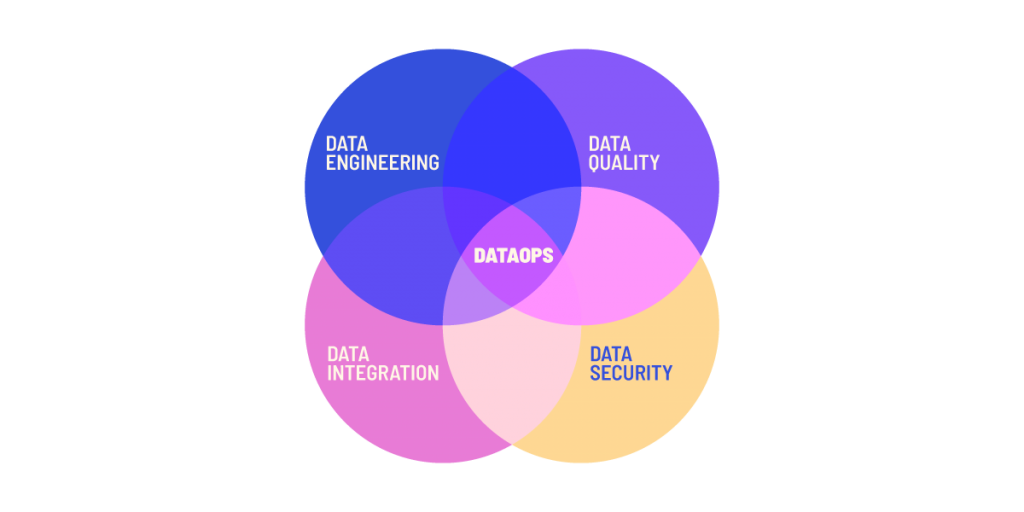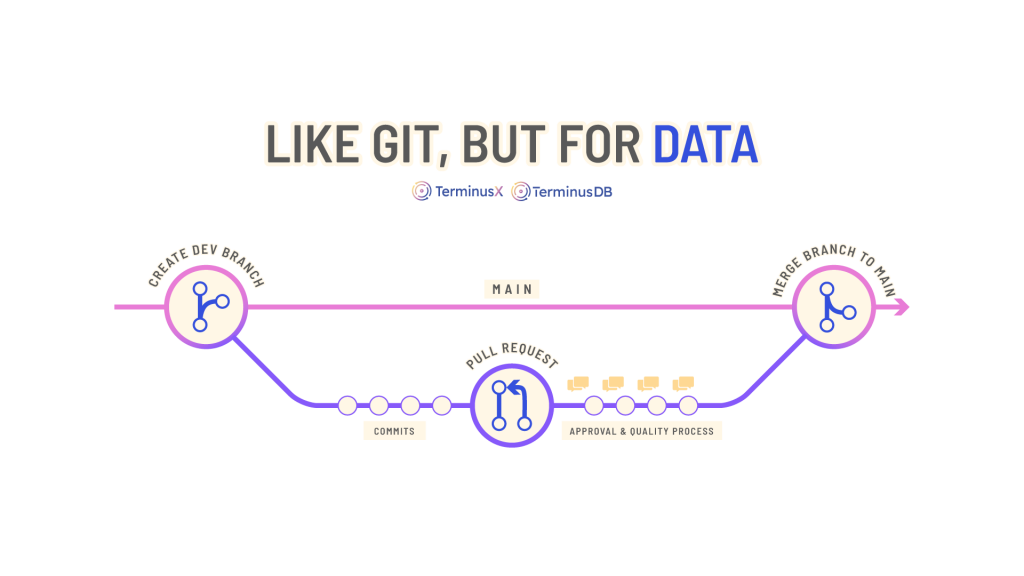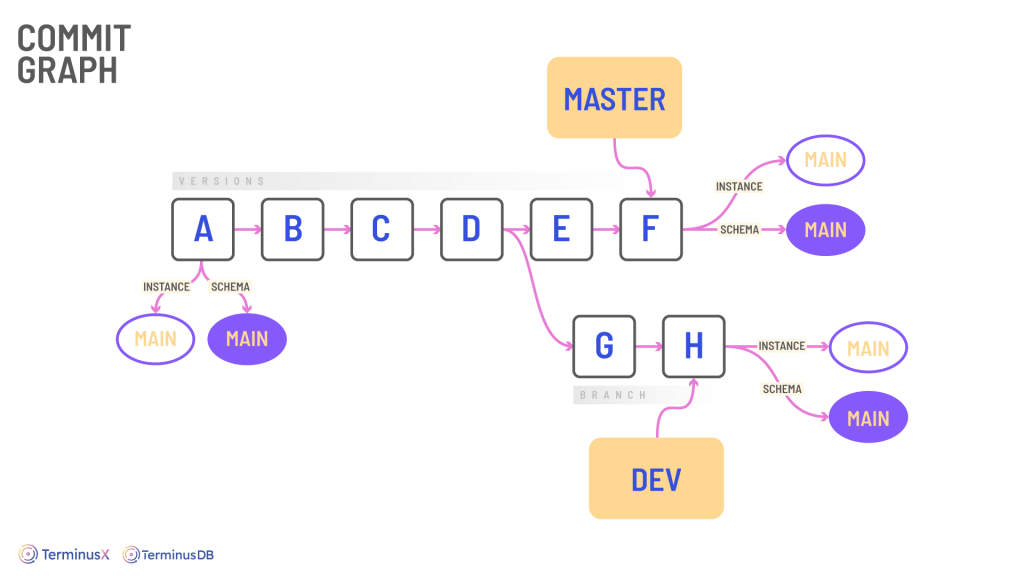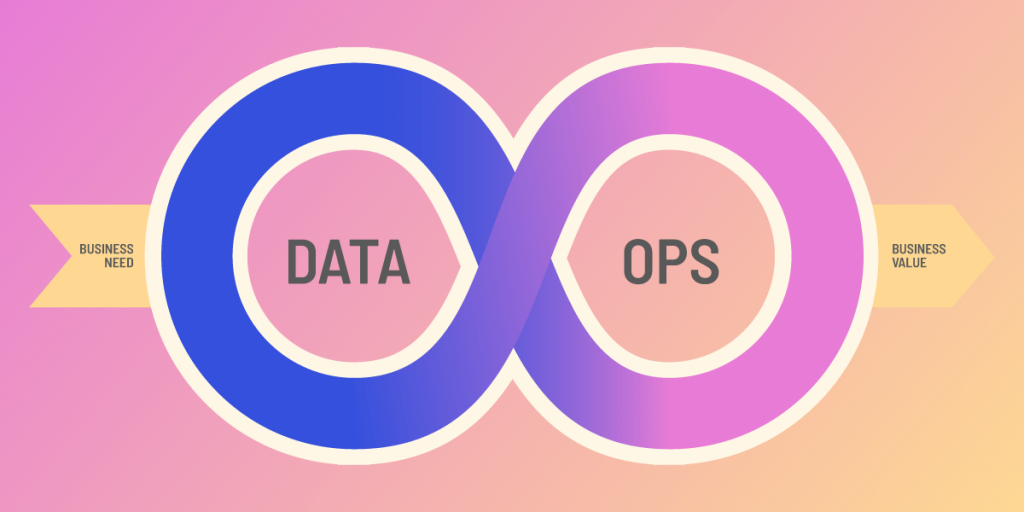DataOps tools are designed to help DataOps teams create business value from big data, be it application development or analytics. While the list of available DataOps tools keeps growing, it begs the question, do we need to keep adding to our toolchain to achieve an Agile nirvana?
This article examines DataOps in further detail and explains how TerminusDB is focused on collaboration, workflow, and control to provide data teams with the DataOps tools to design, implement, and maintain a distributed data architecture.
What is DataOps?

DataOps was coined by Lenny Liebmann, in a 2014 blog post on the IBM Big Data & Analytics Hub, and later popularized by Andy Palmer of Tamr and Steph Locke. It also has Japanese manufacturing links as far back as the end of World War II.
DataOps is a process-oriented methodology, adopting Agile practices, to shorten the cycle times of analytic and application development and improve data quality. Its main goals are:
- Speed up the delivery of analytics and applications.
- Improve data quality.
- Remove silos and improve collaboration between data, software, IT, and domain teams.
- Provide clear measurement of results with greater visibility and transparency.
For a more detailed overview of DataOpes, these articles provide good background reading: IBM, Data Kitchen, and the DataOps Manifesto.
Why is DataOps Important
The sheer quantity of DataOps Tools available today shows that the methodology is being taken seriously. And rightly so. Software development moves at light speed and, traditionally speaking, the data world has not been afforded the same opportunities to innovate. However, the need to change the way organizations handle their data architectures has never been more important. Here are a few reasons why DataOps is important:
- Volume of data: The world produces a lot of data, 64.27 zettabytes in 2020 according to IDC, and is forecast to have a compound growth rate of 23% until 2025. Lots of data now and lots of data in the future, so we need better ways of storing, accessing, and working with it.
- Decentralization, domain ownership, and data mesh: Data Warehouses and Lakes solved a lot of problems, but also created new ones such as divorcing content experts from control over data modeling, data creation, and data curation. Over-centralization created new headaches while solving the problem of visibility. More and more organizations are moving away from centralized monolithic architectures and this requires a greater focus on data and how it is moved and accessed across the organization.
- Finding a faster time to market: Part of the reason why data mesh and decentralization are picking up traction is that data management has fallen behind application and analytic development and a new approach is needed to catch up and remove the bottlenecks hindering the fulfillment of ever demanding business needs.
- Burn out: A survey by Data Kitchen receiving responses from over 600 data engineers showed that a whopping 97% feel burned out and 70% are considering leaving their jobs within the next 12 months. If we want talented people in our industry we need to make sure they’re happy or we’ll stagnate. Something needs to change.
Where TerminusDB fits into DataOps
The four points outlined above: speed, quality, collaboration, and visibility and are at the core of TerminusDB and TerminusX.
From our perspective, speed, quality, and collaboration are interlinked and stem from the latter point: collaboration.
If you Google DevOps tools, you will find lists of collaboration tools including Slack, MS Teams, and other such applications. This isn’t how we define collaboration. Yes, good communication is important, but to achieve true collaboration, you need Git-like features for your database.
Looking for DataOps Tools? Collaboration is key
TerminusDB has many Git-like features that enable version control and distributed collaboration.
Where the software world is used to source control to develop in a collaborative and controlled environment, the data world has not been afforded the same luxuries.

TerminusDB uses delta encoding: a way of storing and transmitting data in the form of deltas (differences) between sequential data rather than complete files. Deltas are stored in succinct terminusdb-store structures. Storing differences in this way is very efficient from a storage point of view, but it also enables you to fork, branch, clone, and merge your data.
This is an incredibly powerful tool for data and with DataOps principles focused on removing silos and working more closely with domains, development, and IT teams, helps data teams embed themselves closer to those developing analytics and applications. Let’s delve a little deeper into how TerminusDB’s DataOps tools can help:
History: As new updates are layered over previous versions of the data, users can time travel, looking into the past to see how their data and schema looked across all previous versions. This enables data teams to roll back to the past, or even reapply previous changes to the current version.
Time travel: The ability to look into the past provides organizations with the power to compare and contrast data over any time period of the dataset’s lifetime.
Branching: Data teams can quickly branch data and work with data scientists and software developers to create features, applications, and operational enhancements without disrupting the original. Testing, development, and quality assurance can all be accomplished with relative ease, control, and assurance.
Merging: The ability to merge branches with approval workflows is the defacto way of software development. The same practice applies to your data with TerminusDB, where you can choose your strategy to combine diverged branches safely, to continuously develop your data and schema.
Blueprint evolving data & development requirements with a flexible and extendable schema
The TerminusDB schema language enables documents and their relationships to be specified using simple JSON syntax. This syntax makes it as easy as possible to specify a JSON object to automatically convert to a graph. This approach enables data to be viewed as collections of documents or as knowledge graphs of interconnected objects.
The schema aids development through blueprinting data to ensure those who need it, understand the structure. TerminusDB’s Git-like features also extend to the schema, meaning that as new features, data, and business requirements surface, data teams can extend the schema securely in a controlled way. If adversity arises due to unforeseen changes post-merge, it is easy to roll back and start again or tweak.
The extendable and flexible nature of TerminusDB’s syntax means that it is designed to scale. Historically the source of data engineer burnout typically stems from the issues caused by scaling the data infrastructure and the problems that arise from constant fixes and never-ending maintenance.
Schema helps to blueprint your data team’s happiness.
A commit graph for complete transparency
We briefly covered visibility and transparency above, but another feature of TerminusDB that is a useful DataOps tool is the commit graph.
The commit graph tracks data flows and changes in your system. See who made specific changes and when. This functionality enables users to audit their application data with ease.
Summary – Why Collaboration is Key to DataOps Tools
Whether you’re part of a data team or looking to build collaborative apps for organizations, DataOps is a great methodology for speeding up cycles, improving data quality, and creating closer working relationships with other teams to deliver business value.
By adding Git-like features to your data management tools provides your data team and wider business with the following benefits:
- Faster development and analytic cycle delivery: Branch data and work as a team on the same data asset. Work hand-in-hand with data scientists and software developers to build features, analytics, and operational improvements.
- Improve data quality and reliability: Work as a team with approval workflows to get sense checks. Test changes without impacting business processes, and when quality measures are met, merge into production.
- Harmonious DataOps, DevOps, and domains: Work closer with data scientists, developers, and domain experts by giving them quick access to the data they need. Work hand-in-hand to deliver business goals.
- Visibility and control for complete audit history: See who changed what and when. View all of the iterations of the past, and audit your data to provide a detailed measurement of projects.
If you’re looking to build data apps with collaboration at their core, TerminusDB is an open-source multi-model toolkit for building collaborative applications, install it today and have a play. Alternatively, get started for free with our cloud headless CMS TerminusCMS, start building in minutes by signing up today.
